How one woman’s mission to help indigenous Indians backfired into post-empire soul-searching
Lorna Collins wanted to do good, but the villagers she tried to help with an art-therapy project saw it differently

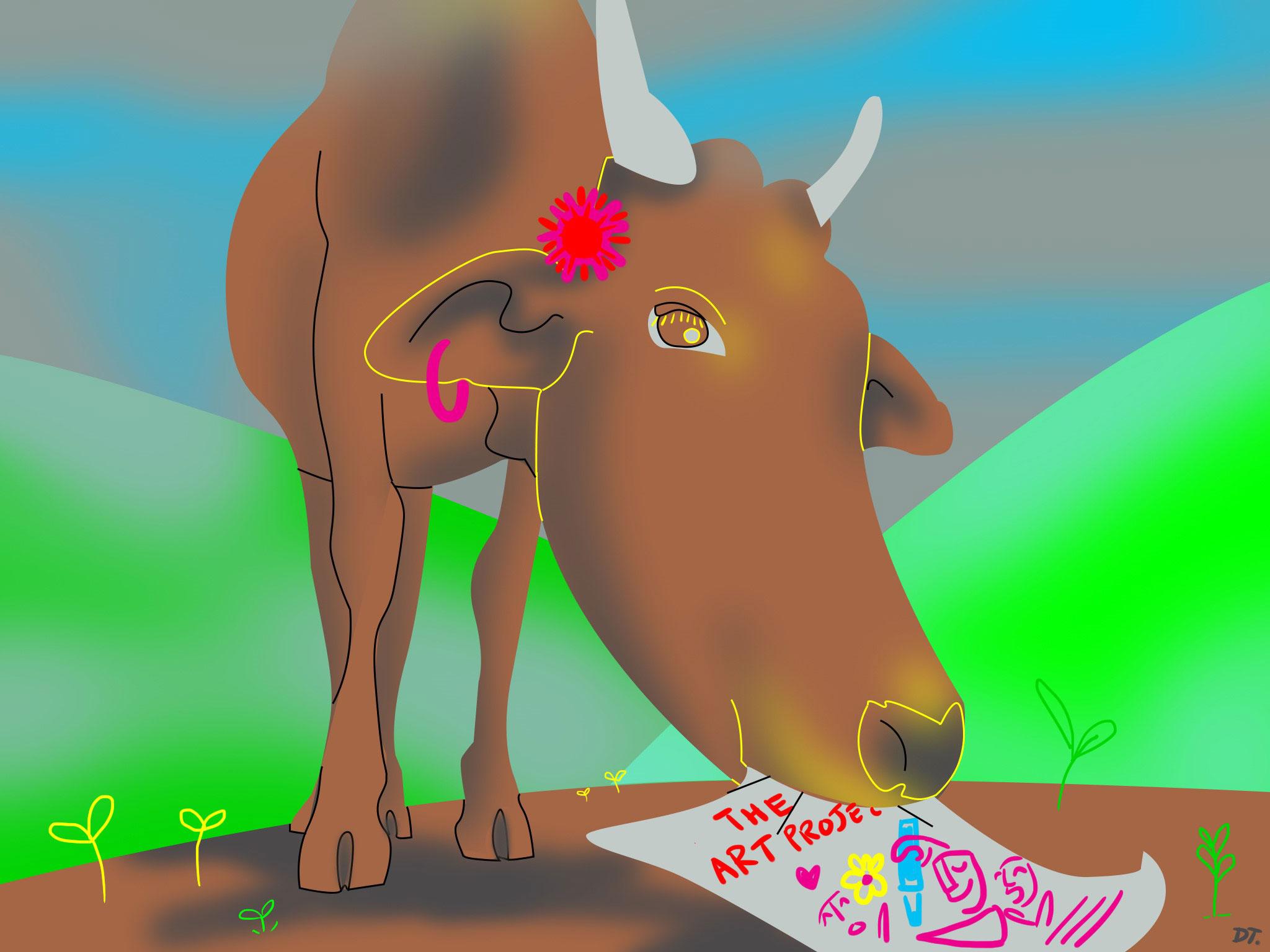
I came to India, seduced by the vivid, parched, colours, the thick hot air, the cows chewing cud in the street. Struck by the extreme socioeconomic disparity, remnants of both the caste system and the impact of colonialism, I was fascinated by this rich, complex country. In particular, I was gripped by the plight of the Adivasis, indigenous tribal communities which live on the outside, or on the margins, of Indian society.
They have shirked India’s caste system, by opening a community where all group members are different, but equal. But in respect to the rest of the country, Adivasis are exiled: separated and subordinated. Moved by the Adivasis’ plight, I began to direct an exciting art project that would open the Adivasis’ culture and build an awareness of their ancient traditions and self-resilience. I wanted to stimulate and record Adivasi art, performance and story-making. The aim was to share their narratives around the world, with audiences who did not even know they existed.
This is the story of my utopian idea, and its sheer catastrophe in practice.
I leave home gladly, excited to be on my intrepid voyage to the wilderness in India, my favourite country. It is snowing so hard as I make my way to the airport. England has ground to a complete standstill, while everyone complains about the weather. The roads are slushy but the taxi eventually arrives. At the airport I I think, ‘Here I am – at the start of my adventure!’
The plane, of course, is delayed for hours but eventually makes it to Bombay where I am to catch a flight the next day. I step out of the terminal and into the hot wave of blurred air as smog hits me. Knocked for six, I try to breathe. I sniff. I cough, and blink. Quite a change from the bitter “Beast from the East” blizzard paralysing Blighty.
I’m so late the driver sent by my hotel is nowhere to be seen.
Can’t be that hard to find a taxi, I think. I follow signs and, a disorientated while later, I find myself in a multistory car park trying to book an Uber. Eventually I find my taxi and show him the address of my hotel, which is supposed to be very near to the airport (according to TripAdvisor), and easy to find (hence my booking). The driver does not seem very confident, or much more clued in than me – though that may be because the language gap. Down the back streets of Bombay, he gets lost and can’t find the hotel. He drops me off at a hotel that isn’t the one I had booked. Unknowing, I get out, pay him, and he drives off. I go to this hotel but it isn’t mine. They direct me. Lost, unsettled, confused, eventually, I find the hotel I booked.
When I arrive, the manager (who speaks Pidgin English, thank goodness) tells me that they already cancelled my booking, since I had not appeared at 12pm. I’m late. And there will be no refund. What to do. I tell him that I did not cancel my booking, my flight was delayed. There was no way to inform him that I would be late, since I was on a plane. He just says I have no booking. Goodbye.
What are the options… I have no idea where I am, I could go back to that other hotel, but I can’t remember how to get there. I ask the manager if I can book another room. He says I can, but for a price three times the price of the original booking I had made (which he had cancelled). Plus, the price of the previous room of which they had cancelled the booking. SCAM! Welcome to India. I argue with him for a bit, and try to barter the price, without much success. There is very little I can do. I’m too tired. I book the room, go there and fall asleep (completely exhausted).
I awake at 3.30am the following morning, after an unsettled night, and have a cold shower (no hot water), make myself a coffee with my travel kettle. Refreshed, I go downstairs. The hotel taxi costs 5 times what the Uber cost yesterday. I try to argue, but no one speaks English. It’s like arguing with a brick wall. I leave, cross, in a hurry.
But I get to the airport in one piece, and in plenty of time for my flight. I try to get money out of the ATM. It does not accept my card. The second machine is broken. The third refuses to give me any money. Buzz. A text message from my bank. Apparently, a considerable amount of money has been withdrawn from my bank account. Not me! Fraud. My account is blocked. I have no access to money.
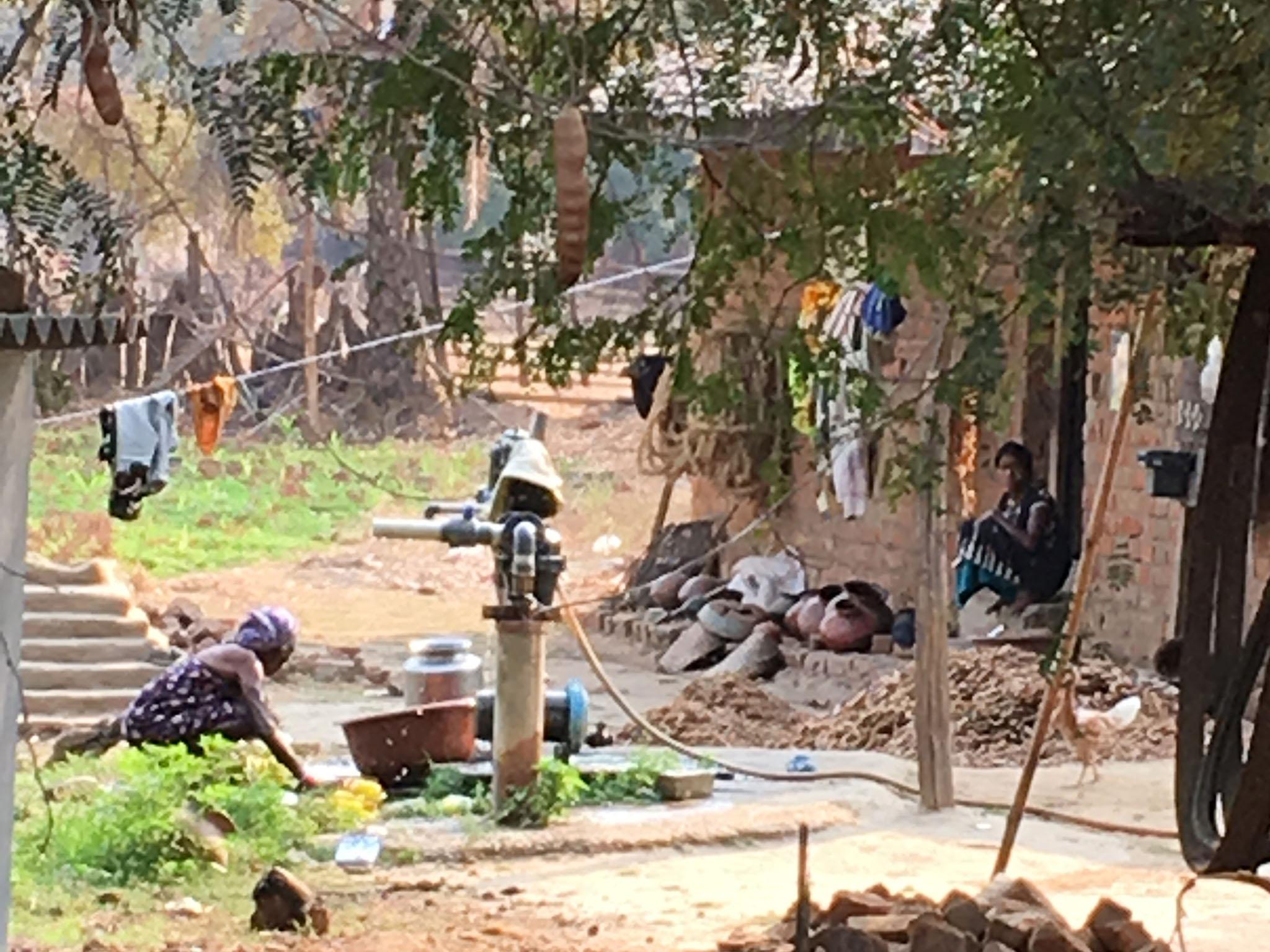
The bank puts me on hold (expensive minutes) but there isn’t time to wait. It is about 1am in the UK anyway. Bank closed. What to do?
I need to concentrate on the next stage of my imminent adventure. Waiting for the next flight, I meet one of my collaborators, Krishna, an art therapy student, who has come from Singapore to join me on this trip. We have an Indian breakfast (a version of the Indian staple, curry), plus coffee, and board the flight to Raipur.
There we meet Jaya, also an art therapist. We also meet our local guru who is to take us around the Adivasi villages. Almost ready, I’ll just get my bag. I realise that my baggage is lost. Oh dear! I ask my friends to talk to the Jet Airways team and raise this problem. What am I going to do without all my stuff?
Onwards. Either I’ll never see any of it again, or else they might somehow find it, in which case it will have to wait here until I return to Raipur. Anyway, I have my medication, my phone, my bank card (which isn’t working). I’ll survive.
We leave the airport and begin a five-hour cab journey to Kondagaon, the town where we will base ourselves during our visits to five Adivasi villages in this area. In Kondagaon, we stay in a hotel. I share a room with Jaya, who very kindly lends me some of her clothes. No matter that I resemble a mountain of lead beneath a corpuscular tent, these clothes are very pretty. Indian chic (if pasty, unkempt, above my white-cum-blue pallor).
Practical difficulties arise: who pays the bills, when my card is blocked? What to do… I ring my bank but the problem of sourcing money persists.
For dinner, us comrades go to the local restaurant (which we visit three times a day, every day, during our odyssey around Kondagaon). We always have the same thing: for dinner and lunch there is roti, or countless chapatis, with spicy sauce (how hot can you take it?) and vegetables, pulses, or meat, followed by a large dollop of rice to mop it all up. For breakfast there is dosa – the large, thin, crispy (slightly greasy at the edges) curved pancake, dunked in a selection of spicy sauces and unknown concoctions. Some involve coconut, or chickpeas. Most are definitively hot. Curry for brekkie. Quite a wake-up call. This comes with short, very sweet, cups of coffee.
I have a cold shower and potter about the area near the hotel. Lots of stray dogs and cows. Everyone stares at me. I stick out like a (sore) thumb. So white I’m china blue, remember, complete with permanent, haggard bags beneath my eyes. Namaste, I bow to every stranger.
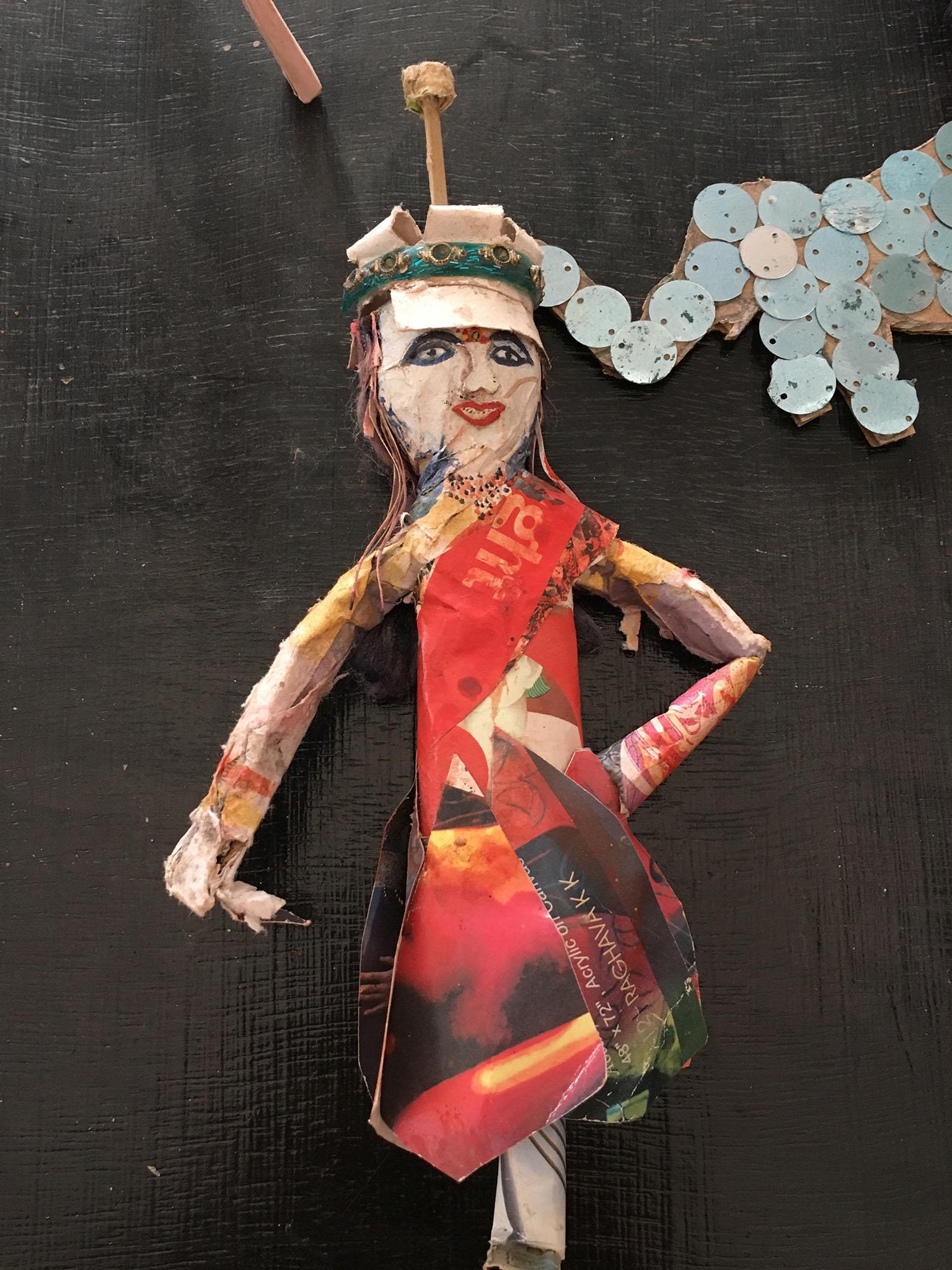
Five hours after I usually eat, I’m famished, and guzzle whatever there is. How unusual. I have a history of, to put it mildly, being fussy (or severely disordered eating). In India I eat whenever and whatever food is given. We discuss the plans for today.
The guru will lead us to villages where we will meet members of the Adivasi people and talk to them about the role that art and craft plays in their daily lives and traditions. We will ask if they would like to make art with us, and take part in creative workshops about storytelling, to hear and share their stories, about their lives, homes, culture and their spiritual beliefs.
The first village we go to is laden with sense stimuli. I watch the ritualistic sacrifice of a cock and a boar. They squirm and twitch. Blood flows. Still, they convulse. Where is life? I think. Surely they’re dead? Why are they moving? The spirit doesn’t leave these bodies immediately. It is applauded, hallowed to the Adivasis. Engrossing, revolting, captivating: a powerful ceremony.
This is set within the deep, earthy chthonia (or the underworld) of the landscape around the village. A meeting is called, dominated by the men. They do all the talking. The women (who do all the work in the fields, and seem to run the economy and sub-structure of the working village) are silent. We decide that we would like to work with the women and the children, so we ask for permission to talk with them about our project. They are silent. The village meeting becomes “one for the lads”, and we make no headway with discussions or plans about the project.
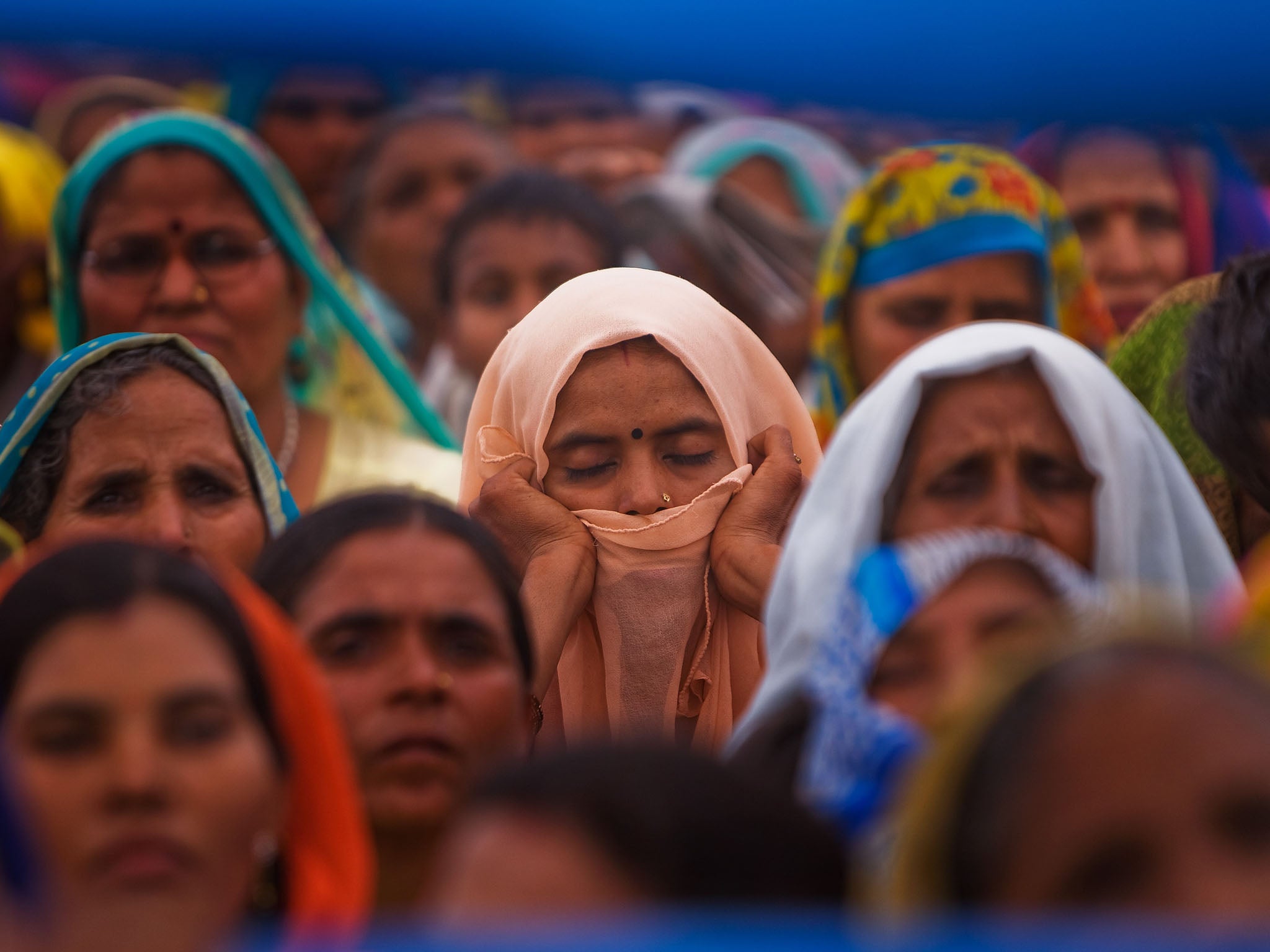
There is apparently a school teacher who speaks English. I long to find him, so that I can have some kind of input, or understand the conversation, so far in Hindi. My inability to follow or make any sense whatsoever of the discussion (being left outside of all discussion) continues to be a huge problem.
We find the teacher. He invites us into the shady classroom – a cool, airy, open space with mud walls and a roof. Relieved, I open a spiel about the aims and intentions of the project. The teacher interrupts me:
“Yes, but what’s in it for us?”
Silence.
“We have you westerners come here often,” he continues. “I understand why you are here. The Adivasis are very interesting to the west, as a self-contained, self-composed, self-reliant people. We are happy in ourselves, with ourselves. We don’t need you. What have you to give us that we don’t already have or want? No one will participate in August. We’re all busy in the fields. It’s impossible, then. Other times are difficult. You haven’t made it clear exactly what benefits you’re offering us, in any case.”
The Adivasis are very interesting to the West, as a self-contained, self-composed, self-reliant people. We are happy in ourselves, with ourselves. We don’t need you
This is pertinent, practical and ontological criticism. It points towards serious flaws in the project, which need addressing. Urgently. What are we offering to or for the Adivasis? Why would they need this project? Or is it just about me, my ideas, my project, my hopes? Except, by now the project is far larger than my own investment in it. It’s a global collaboration.
The guru says this man is a case of “intellectual arrogance”, and we must continue, despite his claims. But we need to pause and reflect. The man was saying that I am arrogant; the colonial coming over to instal her views – which suit my purposes but not the Adivasis’. I do nothing for the Adivasis.
Downcast, I leave the village in sheer dismay. It seems the “untouchables” (rightly) don’t want to be touched; and we have no right to do so.
Bumpy journey on the way to the second village. We have lunch. There are eight of us, including our guru’s conglomeration of friends. I’m silent, exhausted, and thoughtful. A thousand and one (hundred) rupees later, I’m running out of money fast. Very bad mood. Off to village two, and I hope it’s more successful. But, doubtful, the whole plan’s in ruins.
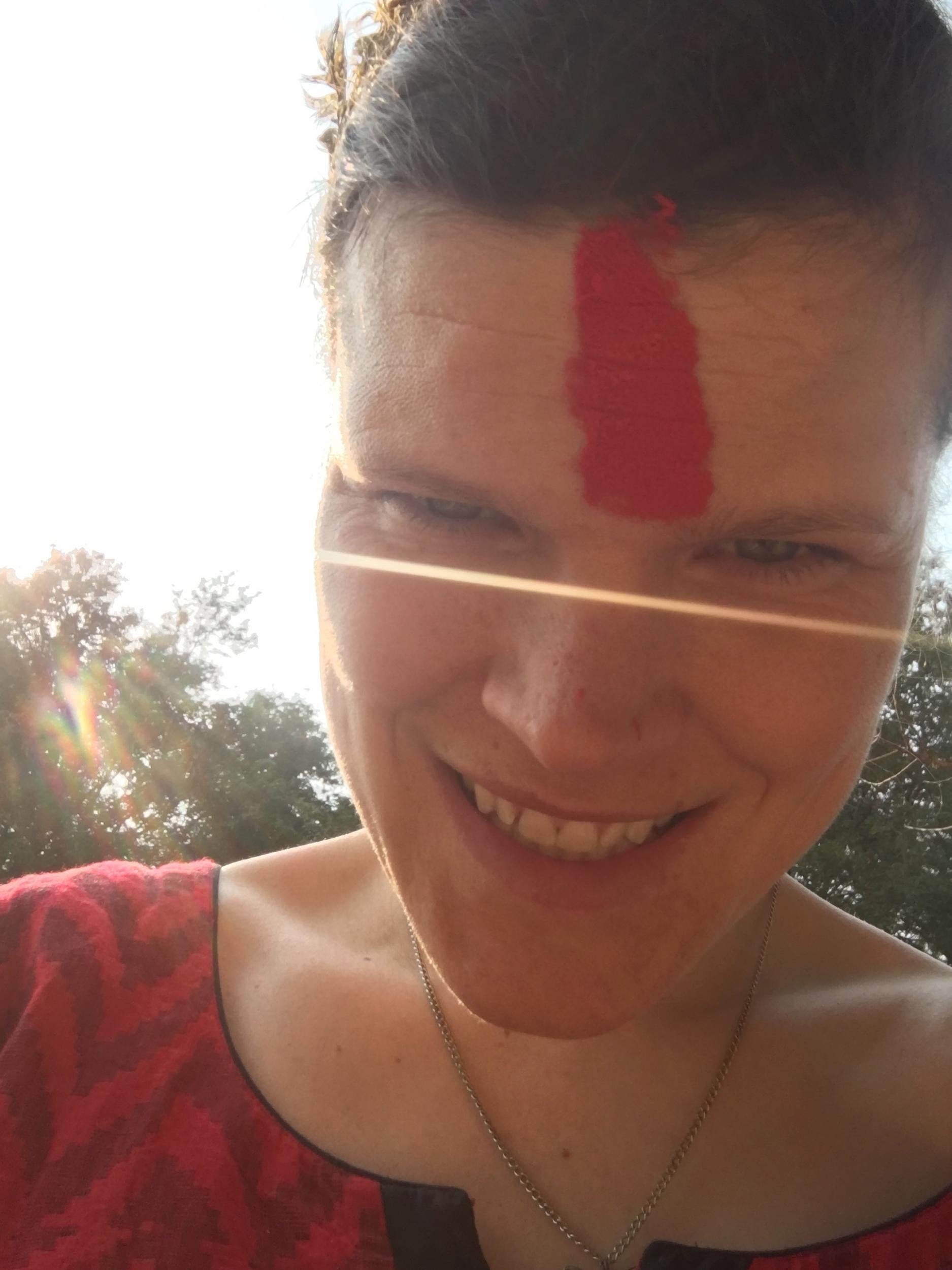
Eight of us journey, squeezed into the car, to the second village, which is a much more positive experience. When we arrive, we meet lots of children at the school and they seem subdued, reserved, silent, restrained. We later find out that their parents dope them with the local wine (made in each village) until they’re quiet and fall asleep, so the parents aren’t bothered by them.
This village is much smaller and more remote. A different culture, a different dialect. We speak with the women, the schoolteacher, the chief. By the end of our visit, the women and children are following us around and invite us to have a drink of water and a private meeting (for and with the women), while the men are doing the same thing nearby.
Then we are invited for sweet tea and some weird marzipan snack thing at the chief’s big house (outside the village). I am a sheer outsider because of the language barrier. I have no idea what anyone is saying.
Fast-forward: the trip is now ON. After such a positive meeting with different members of the second village, we are formally invited to stay with them for a few days in August, and to collaborate artistically with the women and children.
What can I offer this project? Here, I am the rich white woman who dishes out the money. I am expected to pay for everything, with no acknowledgement, just presumption
After the second village we go back to Kondagaon and I have a cold shower to refresh. Exhausted, yet again, always. Shortly, myself and my two colleagues go to the one restaurant in the region we’ve been going to, three times a day, every day. At last we can debrief and discuss what we’ve seen and learned in the villages. Our conversation restores (if momentarily) my hopes in the project. I go to bed full of hot, spicy stimuli, and fall straight to sleep (gratefully).
In the morning, I awake promptly. I go for another walk in the streets, to talk to the lurking cows I have by now befriended. Pensive, I consider how the project is challenging all of my resources: ethically, linguistically, financially, corporeally, emotionally. I do not know if I could afford all these differing, demanding expenses.
Soon it’s time for dosa, a shot of coffee, and onwards to village number three. We arrive. There is a Gond religious festival, which involves the selection of men to embody God. In the distance, I can see a man shaking and screaming, in a trance, as the spirit ascends into his body. His visionary ecstasy is pure, so powerful. He enters a trance, apparently to relieve suffering in the village.
All the men are involved in this crucial meeting at the local temple. We watch from afar, and then go back to the village to talk to the women.
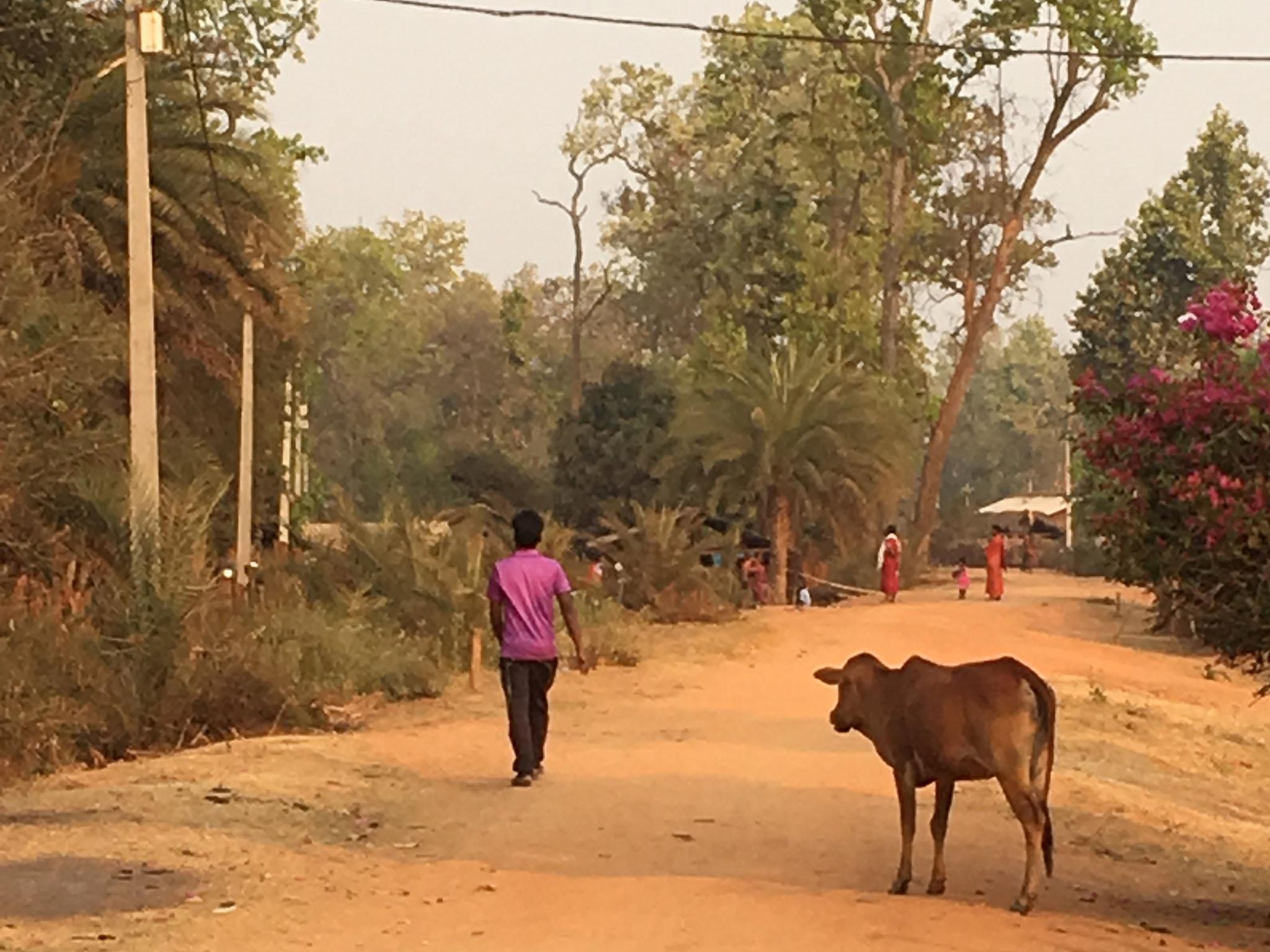
This village is very spread out – quite a distance between houses. All the women are busy in the fields. Lots of buildings being erected, lots of development, brand new houses with television aerials. Government funding is marked by logo on each home. This is pure propaganda. They take the old tradition of building houses from mud and natural materials, with natural lighting, and replace it with cheap asbestos and electricity, branded with a political logo.
Meanwhile, no one has turned up for our meeting. Eventually they arrive, but they are not interested in the project.
Onwards with village four, which has a population of about 1,000. I can’t follow the conversation that evolves during our meeting with these people, due to the language barrier. They understand Hindi (partially) but can’t speak it. A long way off, I gain the impression that these people already have a powerful tradition of living artistically. Their main mediums are dancing and singing. They spend most days in the forests gathering flowers for wine, and wood. They are non-committal about whether our project will be useful to them, or not. Will you teach us a craft? They ask. Sure, we reply. Can we then learn a livelihood, to earn money?
This is not our intention. The Adivasis have no distinction between art and life. Art is intrinsic to and part of their daily living habits, their ontology, their traditions and ancient culture. They don’t really understand the way we determine or distinguish works of art. It’s fascinating to learn about the role art plays for Adivasis.
It may seem weird to them that we come over and talk about inventing a project to “do” art together, when they may not “do” art as such.
In any case, they surely don’t want any white westerner to come and pollute this pure, beautiful world. I feel out of place, selfish, unneeded.
So where is the project? At best, severely challenged. Where am I? Exhausted. Worried.
Village five. This seems a very positive space. The people are generous with their innate creativity. As soon as we arrive, one of the women (clutching her baby on one hip) marks our foreheads with red pigment, to celebrate the religious festival “Holi”. I encourage her to put a little in my book, then I spit on the powder and we both shape and seal it onto the paper. Art!
We go for a long walk around the village, meeting lots of children. We are invited to return, to fulfil our project and make art with them, in August. Excellent.
This is a very challenging trip, on many levels. It’s hard work. I love it here. But in India I feel like an outcast, never worthy of value, a sore thumb. Because of the colour of my skin. Because I can’t speak Hindi. Because I’m English. Because I haven’t trained as an art therapist (like my colleagues, who take over). Because I apparently don’t have anything to offer. Which simply isn’t true. If the Adivasis are outsiders, I am outside their outside, as the white, mute, colonial invader. This is a distinctly uncomfortable, disorientating scenario. I sit, like a (large, squatting) lemon, trying to follow what sounds like gibberish, with no success. I get distracted by all the wonderful animals (everywhere) and become besotted by the beautiful children. I gaze around me, taking in the earth, the jungle, the fields, the blue houses. It’s compelling. I can’t follow what’s being said, except for occasional translations so, in a selfish way, I feel left out. A waste of space.
What can I offer this project? Here, I am the rich white woman who dishes out the money. I am expected to pay for everything, with no acknowledgement, just presumption. I can’t provide meaning or content (other than monetary) since I can’t speak Hindi. They waffle on and on and on and I just can’t understand a thing. An outsider. Pointless.
Heated discussion in the car on the five-hour journey back to Raipur. I raise my dissatisfaction with how things are going, and tried to simplify matters: either this happens in August, when I can come (as planned), or you two take the project away and do it another time, when I cannot come. Then it’s your project and I play no part. We argue. My colleagues have very grave concerns about the direction the project is leading, which in their eyes, is unethical. It is fundamentally wrong to go in August, and impose ourselves on the Adivasis at their busiest time, harvest. I say that we asked the Adivasis about this, and whereas most villages said we must not come in August, two villages said that they would welcome us. The guru adds that there would always be a time available for an activity such as art-making – for example, between 5pm-9pm – even during harvest.
My colleagues say that it is still intrinsically unethical to impose ourselves upon them. In addition, it’s wrong and scientifically unclinical to live with the Adivasis during the project. “They eat cats!”
I want to inhabit the project, and stay with the people, eat, sleep, make art, work with the people. This is crucial. Our guru concurs, you can’t do this without living with them, he says. It will only work if you stay with the Adivasis.
Krishna and Jaya are very unhappy with this idea, from a clinical perspective, which relies on having critical distance between oneself and one’s client.
All my suggestions and all the project are unethical and complicated.
F*** that. It’s a simple decision: either it happens. And it happens in August, if it happens with me. Or it either doesn’t happen at all, or they take it away and do something very different.
Jaya says that if there has to be a decision now, she and Krishna (with art therapy hats) will have to pull out. I retort: fine. I’ll do it with our guru. It’s on!
My proposal: I will come out for two weeks in August and deliver the project, showing and sharing art with the intention of retaining social history. We want to open and share ancient cultures, storytelling, narratives, crystallised, composed, distributed, retained, made history. I will stay in the villages and our guru will collaborate and contribute as translator. Krishna and Jaya may decide to join me if they eventually deem what’s happening sufficiently “ethical”, whatever that means.
In Raipur. A horrible situation last night. After a very difficult, tense journey here from Kondagaon, after the disintegration of the project, there is a heavy silence. We stop for fuel. I have to pay. My card won’t work. Blocked again. I have no idea how I’m going to pay for everything during the rest of this trip.
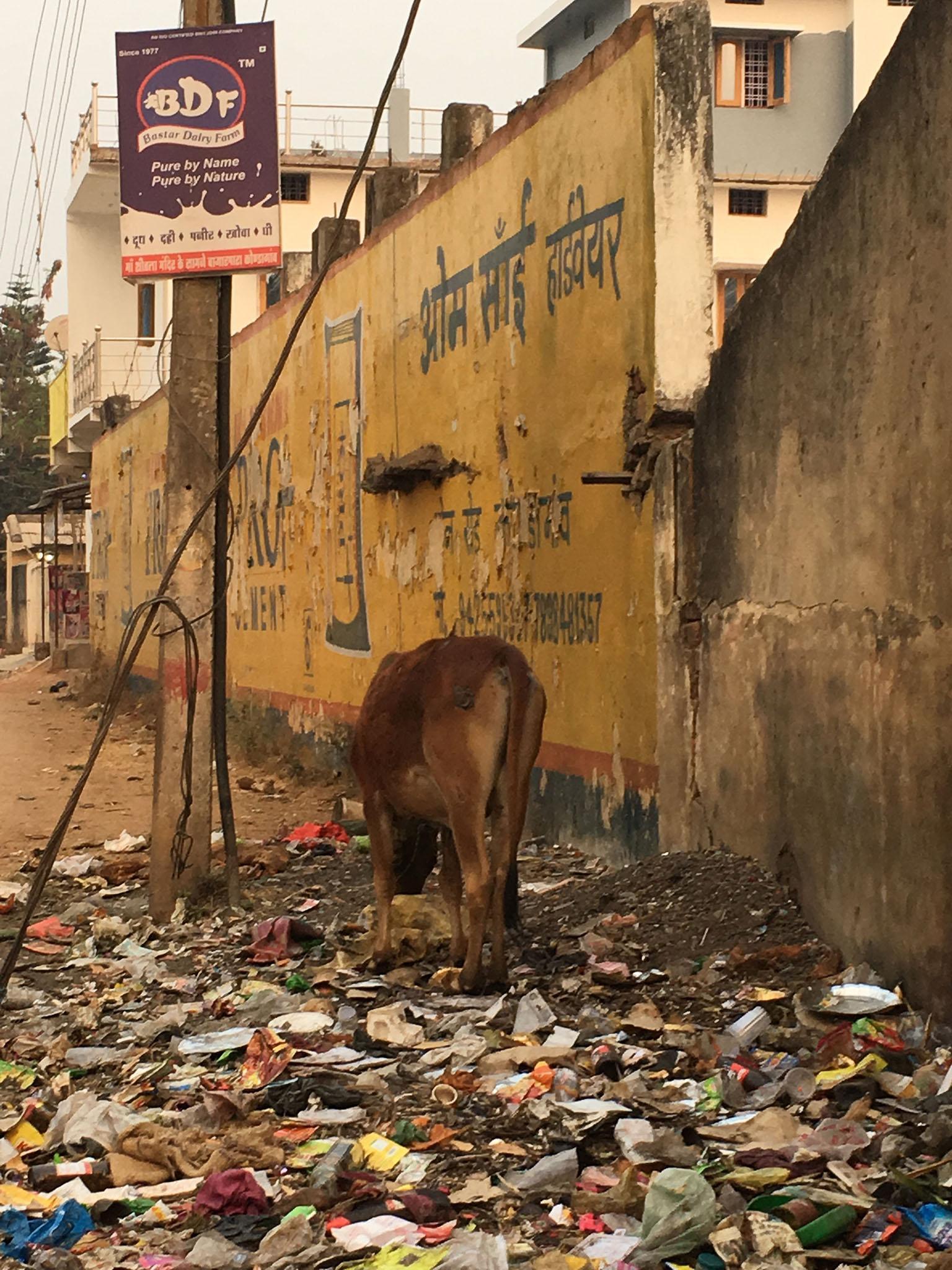
We arrive at the hotel our guru had booked. Krishna and Jaya decide to share a room so they can discuss the project, and their reservations, without me. I have a room to myself. I get very excited because there is a kettle and a tea/coffee-making facility. I accidentally turn on the kettle and it catches fire! Suddenly there is a fire in the room! F***! I hastily pick up the burning kettle, with flames everywhere, and I chuck it in the sink. Sheesh. Fire! I turn on the tap and luckily it soon goes out. Smoke everywhere! Choke! Even worse than the polluted smog outside. I go downstairs and ask for another room. Drama.
At 8pm two people whom I met and worked with on my last trip here, in Raigarh, turn up. These are genuine and committed political activists, well known for their dedicated work on human rights and the Adivasi people. They showed me round villages during my previous visit to Korba, when I made a documentary film. I remember going to a Neo-Marxist (Naxalite) meeting with them. Though I had no idea what was being said, I sensed the fervour and passion, always uprising in their voices, in their lives, in their need. Something must be done! This had been one reason why I’d returned to India, to make art with the Adivasis. But this time I’m in a different area, with different tribes, who have different problems. No mines here.
The couple made a five-hour train journey to see me in Raipur. Wow! How nice, I think to myself. We can have dinner and chat. But they don’t speak English and expect me to put them up for the night here at this hotel. The white colonialist should pay for everything. They also think I have a serious political proposition and want to collaborate with their staunchly activist agenda. Innocent, rather confused, I did not realise they were coming at all, let alone under these conditions.
We go out for dinner to clear the air. More roti at a nearby restaurant. The couple ask pertinent questions for the project as a whole. They are coming from the perspective of the Adivasis’ around Raigarh, who face the annihilation of their landscape, homes and livelihoods by mining. They say to us: we need political solutions, we need our homeland restored, we need jobs; not art! What can art actually do in times of severe turmoil and trouble? In practical terms, an artwork won’t save someone’s life, it won’t bring social, political or economic solutions.
By now my project is in tatters. I can’t begin to retaliate to these crucial challenges. The couple say that my project, or any project with art, or art per se, cannot help the Adivasi population anywhere in India. There are other, pressing, urgent demands that should take precedence over anything that wants to engage with art, craft, culture or cultural heritage. Art is a luxury, not a basic need.
These ideas and criticisms are essential to face and focus on. I retreat and rethink everything. The couple return to Raigarh and I spend one last night in Raipur. In the morning, I go to the airport and they have found my luggage! It went from Bombay to Delhi back to Bombay, then to Raipur. Anyway, I have it now. Jam-packed full of creased clothes and melted cheese (my present for the Adivasis, now a pile of smudged fat and grease, leaking through the molten rubber casing). The situation between us three “collaborators” is very difficult. I’m the Rich Old Stupid Mute(d) Colonial Imposter. Good enough to pay. Nothing else. Silence. Then, at the airport, we separate (even on the same flight).
The situation I encountered then seemed to confirm the aftermath of western colonialism. This was evident in the person I came to represent, as the white person who paid for everything and stuck out like a sore thumb
Now on my own, I have time to reflect. This trip went from awful – luggage lost, fraud, card blocked – to worse than extreme, becoming the Outsider, a crisis of identity.
Back in Bombay, I go for a frank meeting with the people who had offered to fund the whole project (that is, invest and pay for the major undertaking proposed in August, and also for the global travelling exhibition, book, and other intended happenings). As a result of this meeting, the project is officially OFF. For a practical reason, the funders said it would be madness to try and do it during the monsoon season, and simply would not be possible.
Off for another reason: there are already numerous NGOs that work with the Adivasis and their art. The funders suggest that if I still want to do this project, I must collaborate and work under one of them. There’s apparently an awful lot of Adivasi/Gond art out at the moment, so nothing new or valuable about my proposition. It already exists. It’s very popular. This points to yet another flaw: inadequate research. It seems that there is no need for my project, and it must not happen at the only time I can do it. Shall I wait, rethink, gain new collaborators, work under another organisation (not from my own ideas), and then in two years’ time, after I’ve qualified as an art therapist, try again? But I’ll have a career – I hope – by then? The passion will have withered. It’s inconceivable. So it’s off. Officially.
I’m distraught. I have spent the past four years organising this project. And now, it’s been a waste of time, energy, money. So much money.
I leave the meeting with the funders with a premise from contemporary Indian neurology. A neuroscientist friend of the couple is at the meeting. We talk for a while, and I tell her about the damage to my left temporal lobe, which still affects me. Do you have any ideas for how to retain memory? I ask her. Yes, she says. In my research, I have found a solution to brain damage: to regenerate brain cell growth you must starve yourself, and take up running. I suggest you eat a low-calorie diet and go for a run at least twice daily. That should restore your memory and make your brain work better. Touché. I do not tell her that my previous experience of extreme starvation had been almost deadly. Is this advice what I should take from my time in India?
By now, I’m in my hotel room in Bombay. Last night I slept well, because of my medication. I awoke at around 4:45am and had a coffee. I will have something to eat at 7.30am – free breakfast, included in the expensive package of staying here. I was very upset yesterday. I’m still upset now, due to the collapse of the project. I don’t feel very well, mentally or physically. I’m exhausted, distraught, I feel dizzy, my head aches, I’m so disappointed.
I mean, nothing’s wrong: by now I have my luggage, I’m in a room at a hotel. There’s hot water, wifi and a kettle. My bank card is now working, and I have enough cash left to get me to the airport. But I am defeated. My spirit, my passion for this project, for the Adivasis, has died. How pathetic. A waste. Hopeless. Now. In fact.
When I came to India, I was relieved and thrilled to be going to a warmer climate, to be releasing my darling project, to be collaborating with friends and useful people, to be fulfilling hopes and dreams. I was seriously considering emigrating to live in India. I changed my mind, when so disheartened – completely losing heart – by reactions and assumptions to me as a person and my project. For the Adivasis, the guru, his friends, my collaborators, everyone I encountered in India, I am – and can only be – the colonial invader. I hold history on my back. It cripples me.
The situation I encountered then seemed to confirm the aftermath of western colonialism. This was evident in the person I came to represent, as the white person who paid for everything and stuck out like a sore thumb. This happened because I can’t speak either Hindi or any of the Adivasi dialects, I had to rely on my colleagues’ translation, I was separated and removed from proceedings and decisions. I felt separated and judged as the only white person.
Crushed, I felt an outcast. This was very interesting, since perhaps I could then empathise with the Adivasis’ situation on the margins of Indian society, and the caste system. I was an outsider, the Adivasis are outsiders, but I was unable to connect with them. I felt cast out of their being cast out.
The Adivasis are not interested in my art project. They say they are happy, self-contained, self-sufficient people, they don’t need a western intervention from a white person.
Having been planning this project for over four years now, this is extremely disappointing. What can I learn from it? Perhaps the idea that there is never such a thing as “post”-colonial is an important observation to take from this episode. On the one hand, my proposed intervention seemed to rely on dominance and hierarchy (despite my best intentions). I approached the Adivasi people with ideas and propositions about engaging with art as a form of sense-making. Some of these ideas were based around a form of art psychotherapy (with my colleagues, who were trained, and arguably blinkered around this field).
Maybe this seemed an imposition of unwanted material. Who says the Adivasis want or need art therapy? In the area we visited, there seemed little social unrest or disturbance. Any intervention from a westerner seemed unnecessary, unwanted. That is not to say the Adivasis did not welcome us/me. They listened, and two villages invited us to come into their community and make art with them, to do our project. But it is important to learn that the project being offered to the Adivasis seemed to reconfirm a colonial dynamic. The contrary was my intention.
I am left wondering if or how it is ever possible to be truly “post”-colonial. Are the remnants of history, the battle scars of the British Empire, impossible to eradicate or move on from? Now, I must consider how to facilitate a project which has a more elastic, symbiotic rapport with people on the margins, without reconfirming the barrier between the inside and outside of those margins.
I had hoped my project would engage the Adivasis’ ancient heritage and culture, to celebrate their innate capacity to regenerate. I began as the utopian wishing to destroy the empirical patriarchy; I emerge feeling ever restrained, and crushed, by that very history and identity I’d wanted to challenge and disrupt.
Join our commenting forum
Join thought-provoking conversations, follow other Independent readers and see their replies
Comments